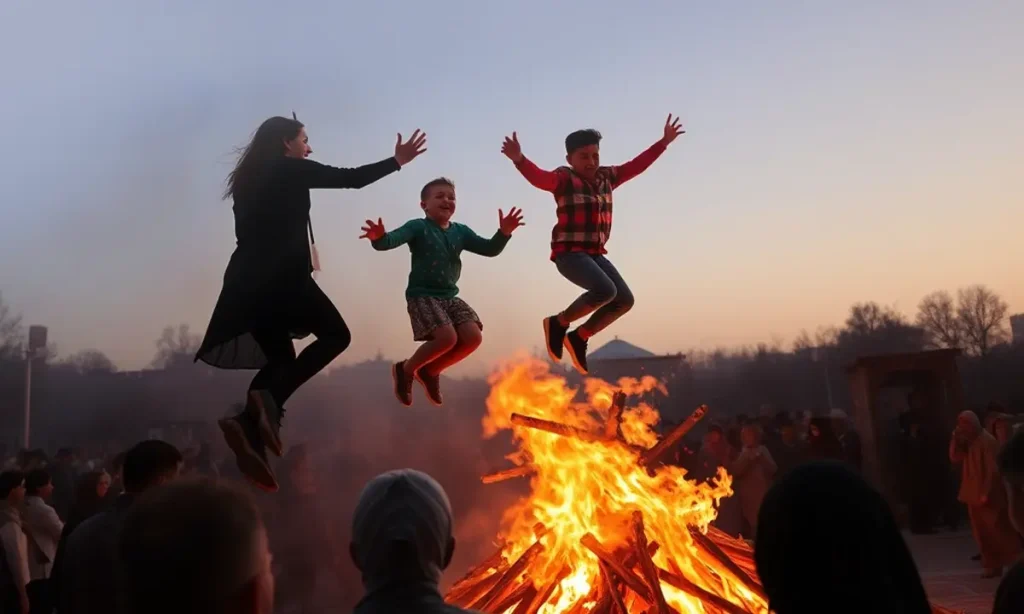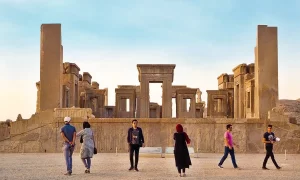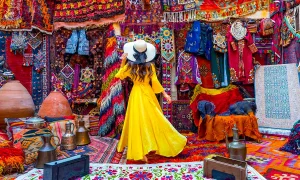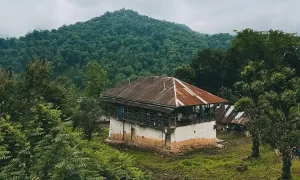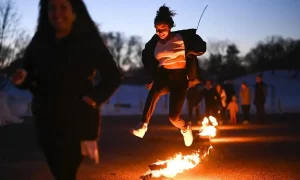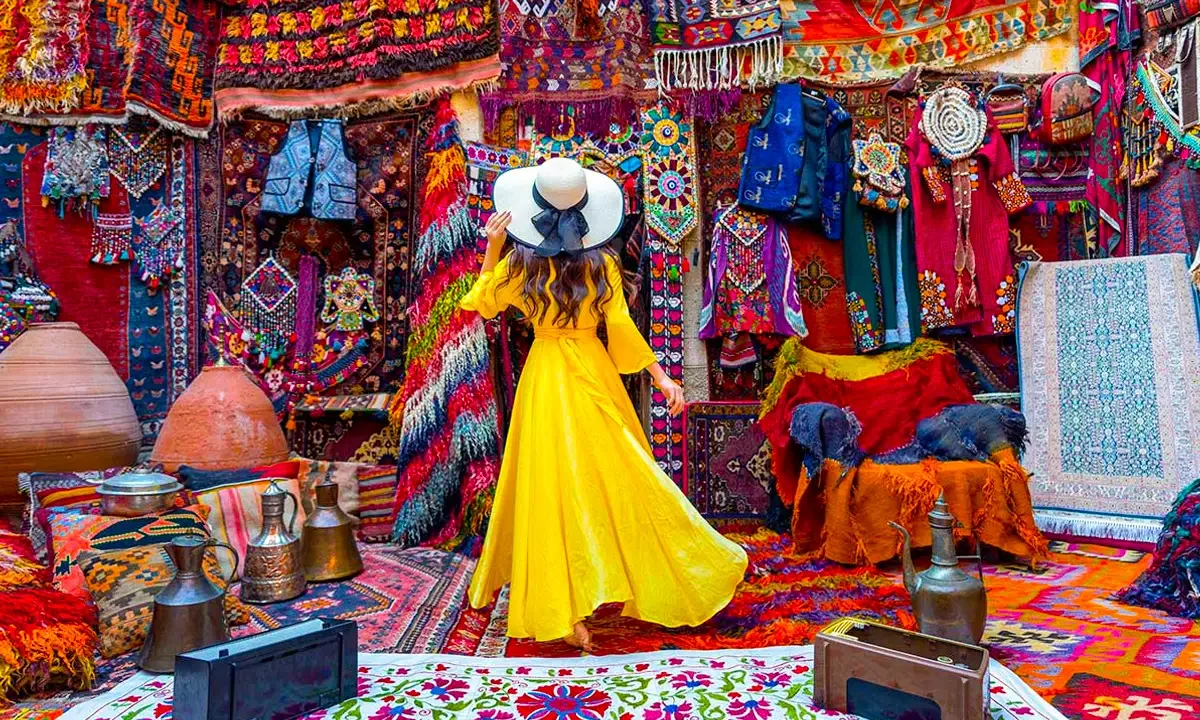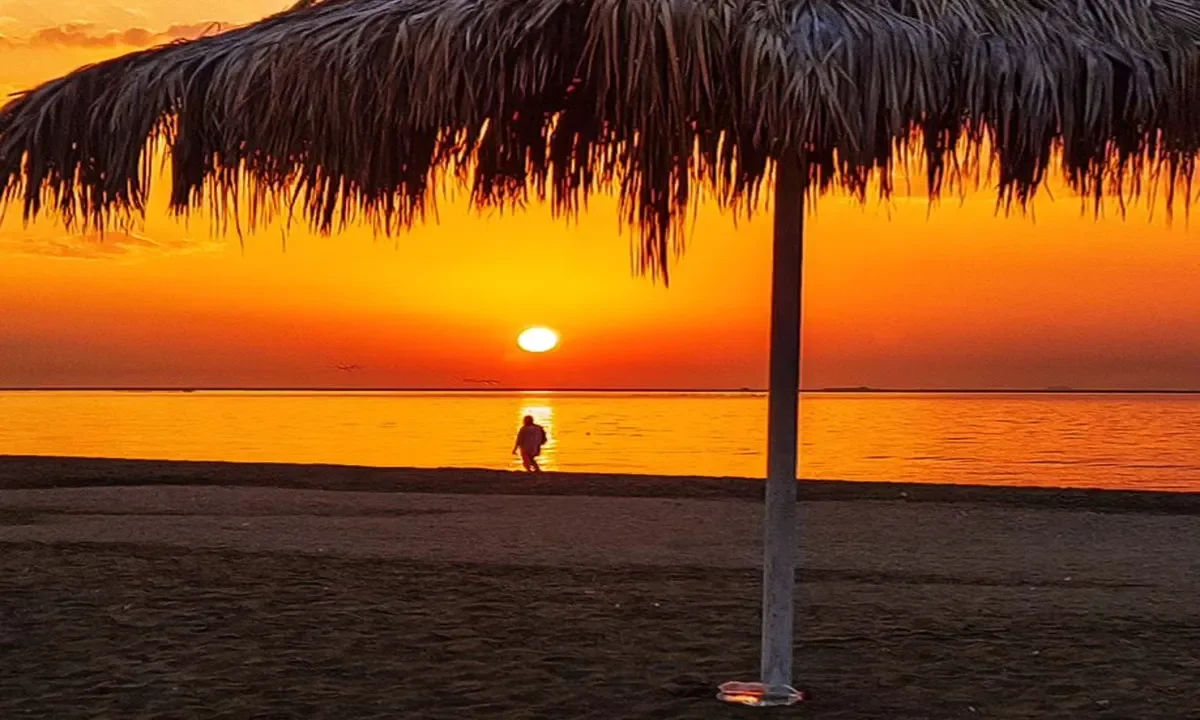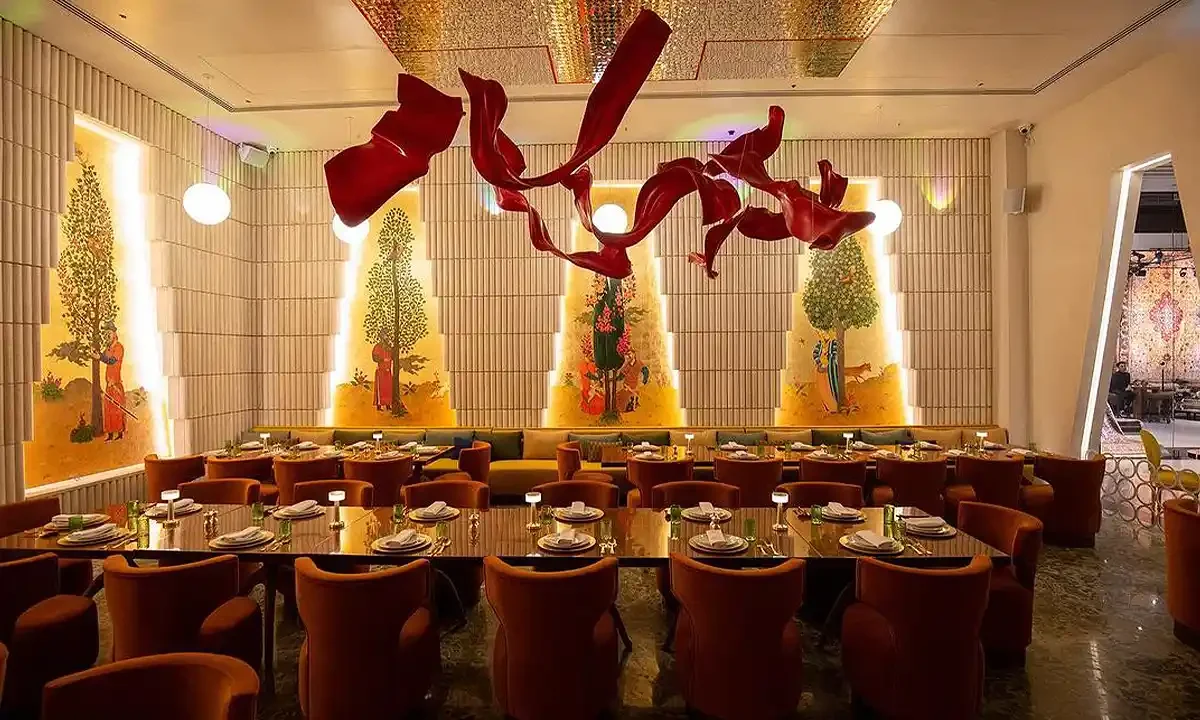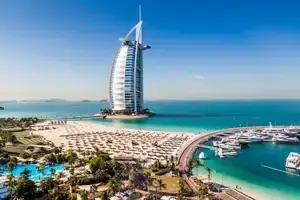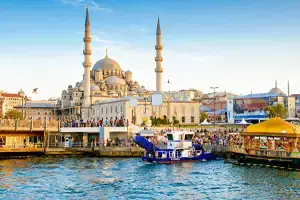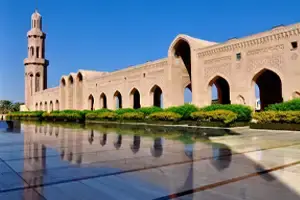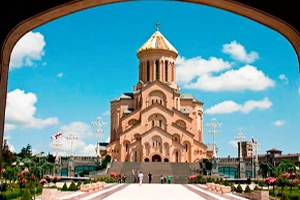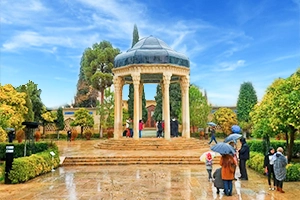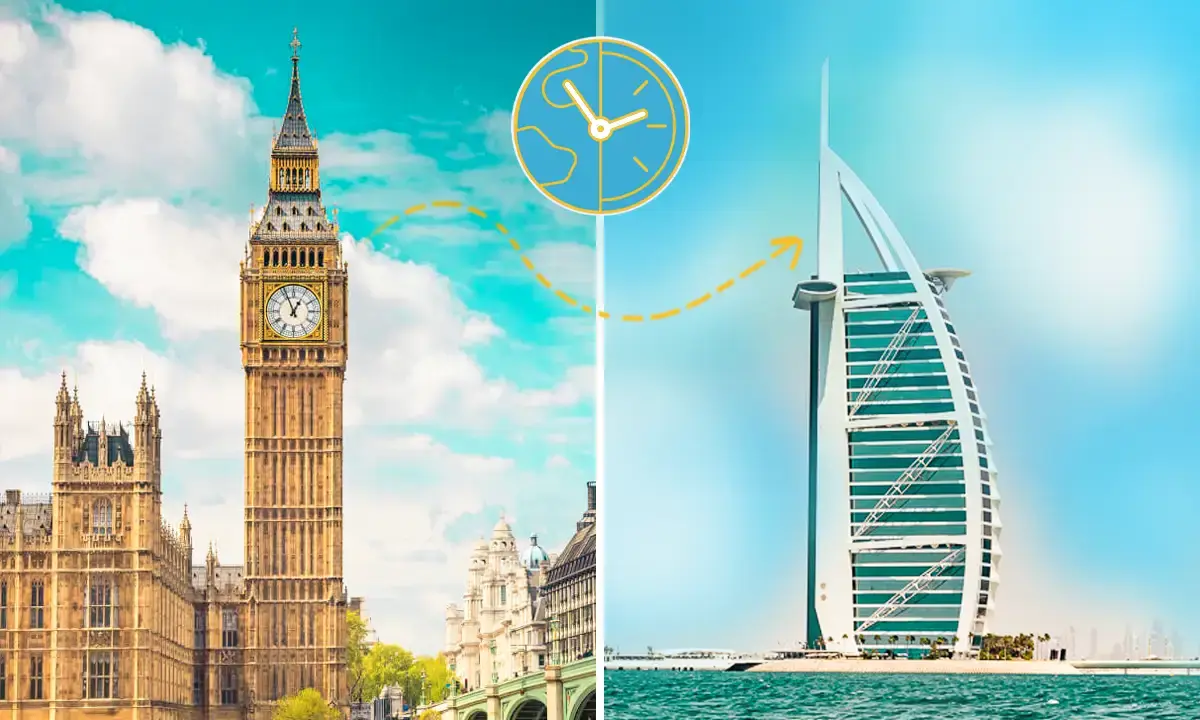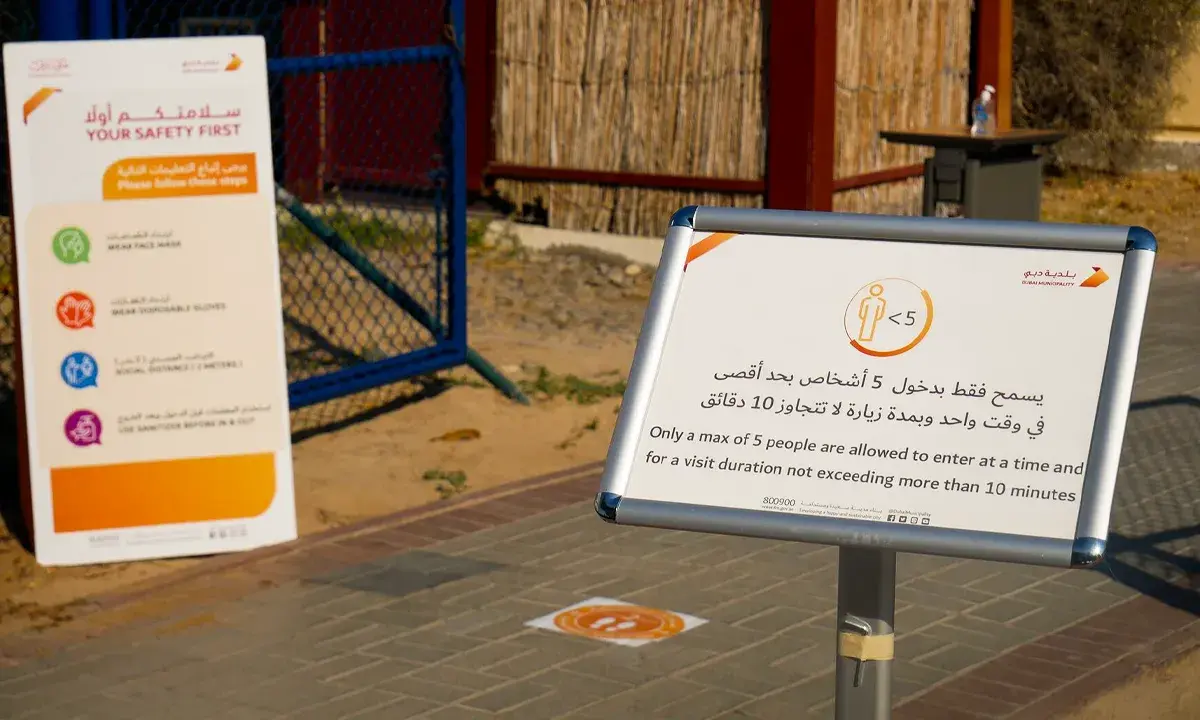Iranian Festivals invites you to uncover the mesmerizing world of Iran’s cultural celebrations, a kaleidoscope of tradition, community spirit, and vibrant heritage. Journey through centuries-old Persian traditions and customs, diving into the heart of Iran’s cultural landscape. From ancient rites to modern-day traditions, this exploration offers insights into the diverse tapestry of the best Iranian festivals, showcasing the country’s rich heritage and vibrant traditions.
This article will cover some of the best Iranian festivals including Nowruz, Yalda Night, Chaharshanbe Suri, and many more. So, without further ado, let’s jump into it!
Nowruz Iranian Festival, A Persian Tradition Reborn
Nowruz, also spelled as Norooz, Norouz, Nowrouz, or Nawruz, is a historic, cultural Iranian festival that marks the beginning of the New Year on the Iranian calendar, which usually falls on or around March 21st, coinciding with the vernal equinox. It has been celebrated for over 3,000 years and is rooted in the traditions of the Zoroastrian religion, making it one of the oldest continuously celebrated festivals in the world.
Historical Background of the Nowruz Iranian Festival
The festival of Nowruz originates in ancient Iran (formerly Persia). It was an important holiday in the Zoroastrian calendar, symbolizing the victory of light over darkness and the rejuvenation of the Earth. Over the centuries, Nowruz has been embraced by various cultures and regions beyond Iran, including Central Asia, the Caucasus, the Black Sea Basin, the Balkans, and Kurdish communities, making it a richly diverse celebration.
Cultural Significance Nowruz Iranian Festival
Nowruz is not just a New Year celebration; it’s a Persian tradition that embodies the spirit of renewal, rebirth, and the benevolent relationship between humans and nature. It promotes peace, solidarity, and friendship among people and communities. The celebration is deeply intertwined with the natural world, marking the rebirth of the Earth as it awakens from the cold of winter.
Traditions and Customs of Nowruz Iranian Festival
The preparations for Nowruz begin weeks in advance, with several symbolic traditions and rituals being observed:
- Haft-Seen Table: A special table setting called “Haft-Seen” (translated as the Seven S’s) is prepared, which includes seven items starting with the Persian letter S. These items symbolize rebirth, health, happiness, prosperity, joy, patience, and beauty. The table might also include the Quran, a mirror, painted eggs, candles, and a water bowl with goldfish.
- Spring Cleaning: Known as “Khaneh Tekani” (shaking the house), this tradition involves a thorough cleaning of homes, symbolizing the removal of old energy to make room for the freshness and positivity of the New Year.
- Fire Festivities: On the last Tuesday night before Nowruz, a festival called Chaharshanbe Suri is celebrated. People light bonfires, jump over the flames, and light fireworks. This is believed to purify them and bring health for the coming year.
- Nature Day: The 13th day after Nowruz is known as Sizdah Bedar and is spent outdoors. Families go on picnics, and releasing the sprouted Sabzeh (wheatgrass) from the Haft-Seen into a running stream to symbolize the casting away of misfortune and illnesses is customary.
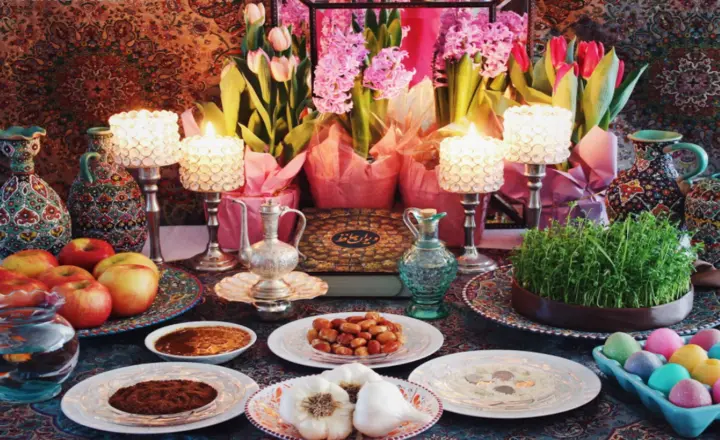
Mehregan, a Persian Tradition Dedicated to Harvest and Friendship Festival
The Mehregan Iranian Festival, also known as the Festival of Autumn, is one of the most ancient and cherished festivals celebrated in Iran, marking a significant cultural and historical event that dates back to the pre-Islamic era of Persian civilization. It is a celebration that honors Mehr (or Mithra), the Zoroastrian deity of covenant, light, and friendship, reflecting the values of love, knowledge, and human relationships in Iranian culture.
Mehregan is rooted in the Zoroastrian religion, which was the predominant faith of Persia before the advent of Islam. The festival is believed to have been celebrated as far back as the early Persian Empire and has evolved over thousands of years. It falls on the 16th day of the Iranian month of Mehr, corresponding to October in the Gregorian calendar, and traditionally celebrates the harvest season’s end and the beginning of winter.
Traditions and Customs of the Mehregan: One of the Best Iranian Festivals
The celebration of Mehregan includes various customs and practices, some of which mirror those of Nowruz, adapted to the theme of autumn and harvest. Key elements include:
- Mehregan Table: Similar to the Haft-Seen table of Nowruz, the Mehregan table is decorated with specific items symbolizing the themes of the festival, including a copy of the Avesta (Zoroastrian holy book), a mirror, candles, fruits, nuts, and spices. The color orange, representing the season of autumn, is prominently featured in the decorations.
- Offerings and Charity: Giving to those in need is a crucial aspect of Mehregan. People share their harvest, donate to charity, and cook elaborate meals to share with family, friends, and the less fortunate.
- Festivities and Joy: Music, dancing, and poetry readings are common activities during Mehregan, celebrating the joyous spirit of the festival. Traditional games, along with modern festivities, bring communities together in celebration.
Yalda Iranian Festival, Iranian Winter Solstice Essence
Yalda Night festival in Iran, also known as Shab-e Yalda or Shab-e Chelleh, is an ancient Iranian festival celebrated on the longest and darkest night of the year, which falls on the eve of the Winter Solstice, typically on December 20th or 21st. This traditional festival marks the end of the month of Azar and the arrival of Dey, the first month of winter in the Persian calendar. Yalda Night is a time of joy and celebration, deeply rooted in Iranian culture and history, embodying themes of renewal, reunion, and the triumph of light over darkness.
Traditions and Customs Yalda Festival in Iran
Many Persians think of Yalda as one of the best remaining Persian traditions. Several distinctive traditions and customs characterize the celebration of Yalda:
- Fruit and Nuts: Central to the Yalda celebration is the consumption of pomegranates and watermelons, believed to symbolize the cycle of life and the colors of dawn. Nuts and dried fruits are also shared, symbolizing prosperity and joy.
- Poetry Reading: A hallmark of Yalda Night is reading poems from the famed Persian poet Hafez. Many gather to read his works, and it’s common to “faal-e Hafez” (divination by Hafez), where individuals make wishes and randomly open the book to a page, seeking guidance or predictions for the future.
- Gatherings: Families and friends come together, often staying awake all night, to enjoy each other’s company, eat, drink, and recite poetry. These gatherings are a way to strengthen bonds and share the warmth of community during the coldest part of the year.
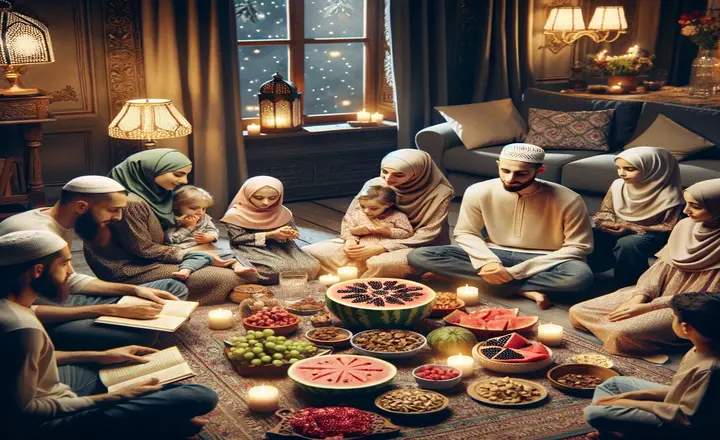
Tirgan Festival in Iran, Celebrating Rain and Rejuvenation
The Tirgan Iranian festival stands as a cornerstone among the ancient traditional celebrations of Iran, historically taking place in July. This festival, rich in cultural significance, is commemorated on the 13th day of July, marking the legendary day when Arash Kamangir heroically shot his arrow from the Damavand Peak.
Popular Beliefs about the Tirgan Festival in Iran
Numerous tales and anecdotes enrich the narrative of the Tirgan Festival, illustrating the diverse beliefs surrounding its observance. This multiplicity of perspectives adds a profound depth and allure to the celebration, underscoring its cultural significance. Historically, two predominant interpretations have emerged regarding the origins and purpose of the Tirgan Festival. The first posits the festival as a homage to Tishtar, the deity associated with rain and fertility in Persian mythology, celebrating the life-giving waters essential to the prosperity of the land. The second interpretation venerates the legendary Arash Kamangir, whose mythic feats are commemorated through the festivities. Each interpretation is supported by rich, compelling stories that have been passed down through generations, echoing the enduring legacy of the Tirgan Festival in Iranian culture.
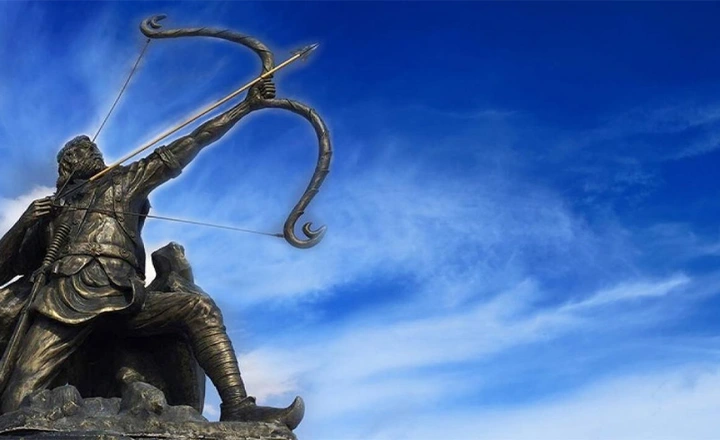
The Sizdah Bedar Festival in Iran, Embracing Nature and Persian Tradition
The 13th of April marks the celebration of Sizdeh Bedar, a cherished Iranian festival where individuals gather with their loved ones to revel in the beauty of nature. Recognized as the Day of Nature on Iran’s official calendars, this date is celebrated as an official holiday, inviting people to immerse themselves in natural surroundings. It is widely held that spending the thirteenth day of Badr outdoors helps to expel Nahsi, or negative energies, from the home, symbolically transferring it to nature. A notable tradition of this familial festivity includes the tying of green grass, a ritual performed with the hope of fulfilling personal wishes.
Way of Celebrating the Thirteenth Day of Badr in the Iranian Festival
The 13th of Farvardin marks the start of a pivotal agricultural season in Iran, a day when people traditionally pray for rain and a fruitful year in their lush, flower-filled fields. This day is not just about agricultural rituals; it’s a time of communal joy, where singing, and the preparation of special dishes using wild greens are central traditions.
Additionally, the day is imbued with practices linked to fate and destiny, such as fortune-telling and the tying of greens, reflecting its deep cultural roots. Celebrations include group activities like games, dances, kite flying, and horseback riding, all rooted in Iran’s rich mythological and cultural traditions.
Significantly, the 13th of Farvardin is recognized as a national day for rain prayers, a practice mentioned in the ancient Avesta, highlighting its enduring importance in Iranian culture and spirituality.
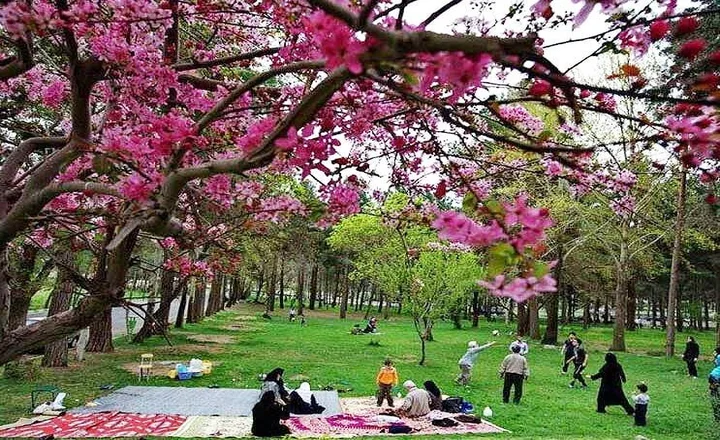
The Mid-Winter Iranian Festival, Celebrating Light and Unity
The Mid-Winter Iranian Festival, a beacon of warmth in the heart of winter, stands as a testament to the enduring spirit of light and unity. Across Iran, families and communities come together, embracing age-old traditions that illuminate the darkest nights. Through the sharing of festive meals, recitation of poetry, and the joy of collective gatherings, this celebration transcends time, weaving a tapestry of cultural heritage and communal harmony. It’s a vibrant reminder of the strength found in togetherness and the eternal cycle of renewal and hope.
What Happens on the 15th of Bahman or Midwinter?
Thanks to the adept management of the era, the ancient Iranians commemorated the harmonious cycle of sowing and harvesting, alongside liberation from the severe cold season. The celebration was marked by the serving of a diverse array of traditional Iranian dishes and the baking of local pastries, all set against the backdrop of authentic Iranian music. The air was filled with the sparkle of fireworks and the lively dance of the Iranian people, heralding a renewed season of hope and vitality.
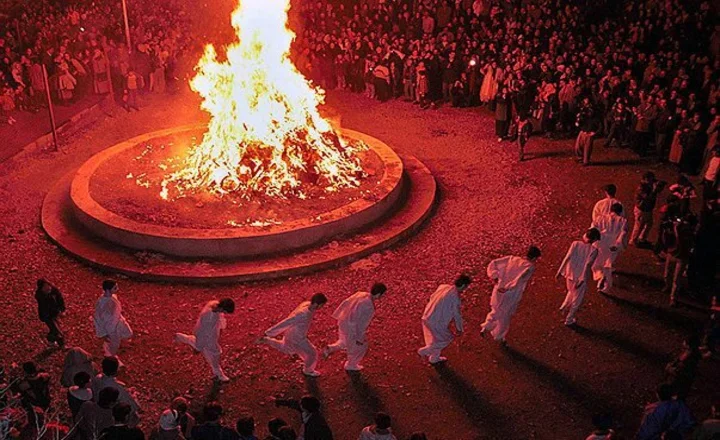
The Chaharshanbe Suri Festival in Iran: A Celebration of Fire
The Chaharshanbe Suri Festival in Iran is a prelude to the Persian New Year, marking the eve of the last Wednesday before Nowruz. This ancient festival celebrates the triumph of light over darkness and good over evil, with bonfires lighting up the night sky as people leap over the flames, symbolically shedding the past year’s hardships and welcoming the vitality of the year ahead. The air resonates with the sounds of fireworks and the crackling of fire, as communities come together to enjoy traditional foods, music, and the recitation of poetic verses. Chaharshanbe Suri is a vibrant testament to Iran’s rich cultural tapestry, embodying hope, renewal, and the enduring spirit of joy.
Why Do Iranian People Celebrate the Chaharshanbe Suri Festival in Iran?
Iranian people celebrate this Iranian festival for several deeply rooted cultural, historical, and symbolic reasons:
- Cultural Heritage and Tradition: Chaharshanbe Suri is one of Iran’s most ancient festivals, with origins dating back to at least 1700 BCE, during the early Zoroastrian era. It is a celebration that has been passed down through generations, embodying the rich tapestry of Persian cultural heritage and tradition.
- Victory of Light Over Darkness: The festival symbolizes the triumph of light over darkness, good over evil, and warmth over cold. The lighting of bonfires and jumping over them is a ritual meant to purify and rejuvenate the soul, symbolizing the departure of the cold, dark days and the arrival of warmth and light.
- Renewal and Hope: Occurring on the last Tuesday night of the Iranian year, Chaharshanbe Suri acts as a prelude to Nowruz, the Persian New Year, which marks the first day of spring. It is a time for renewal and rebirth, both in nature and in the spirit of the people, fostering a sense of optimism and hope for the future.
- Community and Togetherness: The festival brings communities together, fostering a sense of unity and togetherness. Families and friends gather to celebrate, share traditional foods, participate in rituals, and enjoy festivities such as fireworks, music, and dance. It’s a time when social bonds are strengthened, and the collective spirit is celebrated.
- Dispelling Evil Spirits: The customs and rituals of Chaharshanbe Suri, including the lighting of bonfires, the use of fireworks, and the banging of pots and pans, are also believed to ward off evil spirits. This aspect of the festival has its roots in ancient beliefs and practices intended to ensure the health and happiness of the community.
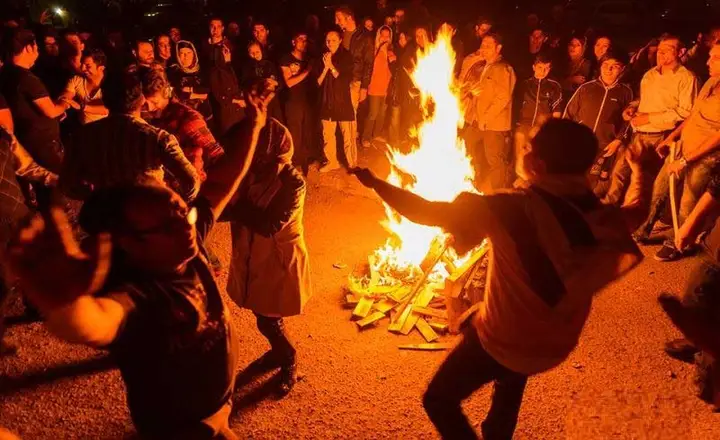
Scents of Tradition, The Rose Water Iranian Festival
The Rose Water Festival in Iran is a fragrant celebration that marks the time-honored tradition of distilling rose water in the scenic valleys of Kashan. As the petals of the Damask rose bloom in late spring, this festival captures the essence of Iranian culture through the distillation process, which transforms these fragrant blossoms into cherished rose water. Locals and visitors alike gather in the early mornings to witness the delicate extraction, a ritual steeped in history and festivity. This aromatic festival not only celebrates the beginning of rose water production but also symbolizes purity, beauty, and the rejuvenation of the spirit amidst Iran’s rich heritage.
How Do Persians Celebrate the Rose Water Persian Tradition?
The Rose Water Festival in Iran, particularly celebrated in the city of Kashan and its surrounding towns like Qamsar, Niasar, and Barzok, is a vibrant and aromatic celebration of the ancient tradition of distilling rose water. Here’s how people celebrate this unique festival:
- Harvesting Roses: The festivities begin in the early mornings of late May or early June when the roses are in full bloom. Locals and visitors participate in the communal gathering of Damask roses, picking the fragrant petals at dawn when their scent is most potent.
- Distillation Process: The collected rose petals are then transported to traditional distilleries, where they are placed in large copper pots with water. The pots are sealed and heated, allowing the steam to capture the essence of the roses. This steam condenses into a liquid, which is then collected as rose water. Observers can watch this process, learning about the techniques passed down through generations.
- Cultural Celebrations: Alongside the distillation process, the festival is marked by a plethora of cultural events, including music, dance, and poetry readings, celebrating Iran’s rich cultural heritage. Stalls and markets also spring up, selling not only rose water but also rose-infused products, handicrafts, and traditional Iranian foods.
- Community and Family Gatherings: The festival is a time for community and family, with people traveling from across the country and even from abroad to participate in the celebrations. It’s an opportunity for families to come together, share meals, and enjoy the festivities, reinforcing social bonds and communal spirit.
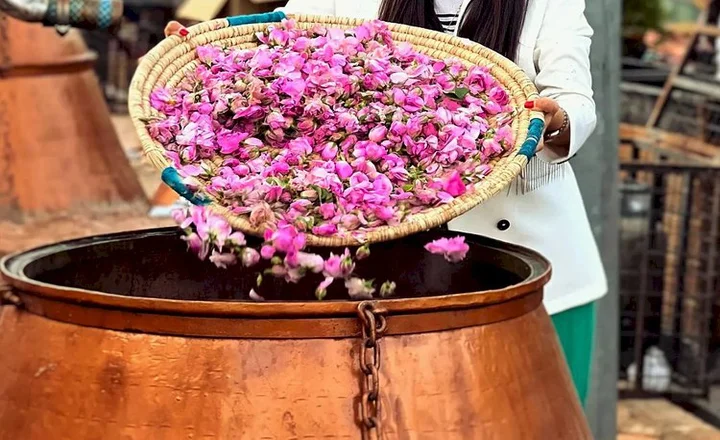
Last Word
Iranian Festivals Unveiled: Exploring the Rich Tapestry offers a captivating glimpse into Iran’s profound cultural heritage, highlighting the vibrancy and depth of its traditional celebrations. From the fiery enthusiasm of Chaharshanbe Suri to the aromatic joy of the Rose Water Festival, these events embody the rich history, spiritual beliefs, and communal bonds of the Iranian people. More than mere occasions for celebration, these festivals are vital expressions of identity and continuity, showcasing the intertwined relationship between humanity and the natural cycle. As we uncover the essence of these celebrations, we are invited to appreciate the universal themes of renewal and unity, fostering a deeper understanding across cultures.
FAQ
What are the main themes of Iranian festivals?
Iranian festivals often revolve around themes of renewal, light over darkness, community, and the celebration of nature’s cycles. These themes are deeply rooted in Iran’s cultural and historical traditions, reflecting the country’s rich heritage and the importance of family and community bonds.
Can international visitors participate in Iranian festivals?
Yes, international visitors are welcome to participate in Iranian festivals. Many of these events, such as the Rose Water Festival and Nowruz celebrations, attract tourists from around the globe. Participating in these festivals offers a unique opportunity to experience Iran’s culture, traditions, and hospitality firsthand.
What is the significance of food in Iranian festivals?
Food plays a central role in Iranian festivals, symbolizing hospitality, tradition, and the sharing of blessings. Each festival has its unique culinary traditions, ranging from the sweet treats of Nowruz to the special dishes prepared for Yalda Night. These culinary practices are not just about nourishment but also about strengthening communal ties and celebrating Iran’s diverse culinary heritage.
How do Iranian festivals reflect the country's cultural diversity?
Iran’s cultural diversity is vividly reflected in its festivals, which celebrate the traditions of various ethnic groups within the country. From the Kurdish celebration of Nowruz to the Arab-influenced Muharram observances, Iranian festivals showcase the rich tapestry of cultures, languages, and traditions that coexist in Iran. This diversity adds depth and variety to the nation’s festival calendar, highlighting the multicultural heritage of Iran.
